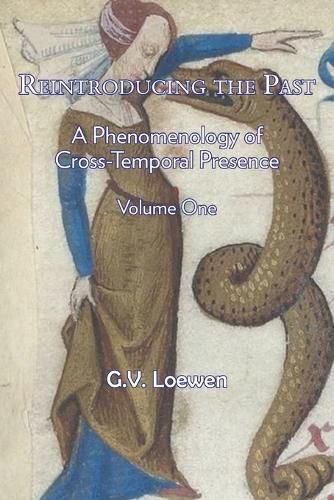Readings Newsletter
Become a Readings Member to make your shopping experience even easier.
Sign in or sign up for free!
You’re not far away from qualifying for FREE standard shipping within Australia
You’ve qualified for FREE standard shipping within Australia
The cart is loading…






This title is printed to order. This book may have been self-published. If so, we cannot guarantee the quality of the content. In the main most books will have gone through the editing process however some may not. We therefore suggest that you be aware of this before ordering this book. If in doubt check either the author or publisher’s details as we are unable to accept any returns unless they are faulty. Please contact us if you have any questions.
We have established what our general expectations of ‘the past’ are to be, given that it is our creation and thus it ‘owes’ something or other to us. It is at first motivated by resentment, tends toward reification, and divulges reconciliation. It has the character of a ‘space, ’ it is something more ‘moral’ than we, and is also possessed of the variety of other traits, including it being a space of acts rather than action and also of the mystery of hiddenness. The past is, in its essence, something occlusive and worthy of inspection along this line alone. The query that begins all of it at this moment is simply, ‘why did this occur?’ To comprehend the presence of the past in this more radical manner - the object, especially if it is art, objects to us and thus as well to all of our nostalgic and romantic desires of it - we find we must engage in both memorial imagination as well as memorial recollection. (From the book.)
In this first volume of a three-part study, a phenomenology of how we understand the presence of time in the world begins with the question: How do we understand the concept of the past? This question has a number of aspects to it: What is the past? How does the past retain its presence in the present? What is the temporal character of that which no longer fully exists? And so on. This analysis attempts to capture the curious amalgam of memory, biography, and history, and subject it to the objection of the present. Herein, the dead must answer to the living inasmuch as the inverse has also ever been the case.
Author Bio - Social philosopher G.V. Loewen is the author of fifty books on ethics, education, aesthetics, health and social theory, and more recently, fiction. He was a professor of the interdisciplinary human sciences for over two decades.
$9.00 standard shipping within Australia
FREE standard shipping within Australia for orders over $100.00
Express & International shipping calculated at checkout
This title is printed to order. This book may have been self-published. If so, we cannot guarantee the quality of the content. In the main most books will have gone through the editing process however some may not. We therefore suggest that you be aware of this before ordering this book. If in doubt check either the author or publisher’s details as we are unable to accept any returns unless they are faulty. Please contact us if you have any questions.
We have established what our general expectations of ‘the past’ are to be, given that it is our creation and thus it ‘owes’ something or other to us. It is at first motivated by resentment, tends toward reification, and divulges reconciliation. It has the character of a ‘space, ’ it is something more ‘moral’ than we, and is also possessed of the variety of other traits, including it being a space of acts rather than action and also of the mystery of hiddenness. The past is, in its essence, something occlusive and worthy of inspection along this line alone. The query that begins all of it at this moment is simply, ‘why did this occur?’ To comprehend the presence of the past in this more radical manner - the object, especially if it is art, objects to us and thus as well to all of our nostalgic and romantic desires of it - we find we must engage in both memorial imagination as well as memorial recollection. (From the book.)
In this first volume of a three-part study, a phenomenology of how we understand the presence of time in the world begins with the question: How do we understand the concept of the past? This question has a number of aspects to it: What is the past? How does the past retain its presence in the present? What is the temporal character of that which no longer fully exists? And so on. This analysis attempts to capture the curious amalgam of memory, biography, and history, and subject it to the objection of the present. Herein, the dead must answer to the living inasmuch as the inverse has also ever been the case.
Author Bio - Social philosopher G.V. Loewen is the author of fifty books on ethics, education, aesthetics, health and social theory, and more recently, fiction. He was a professor of the interdisciplinary human sciences for over two decades.